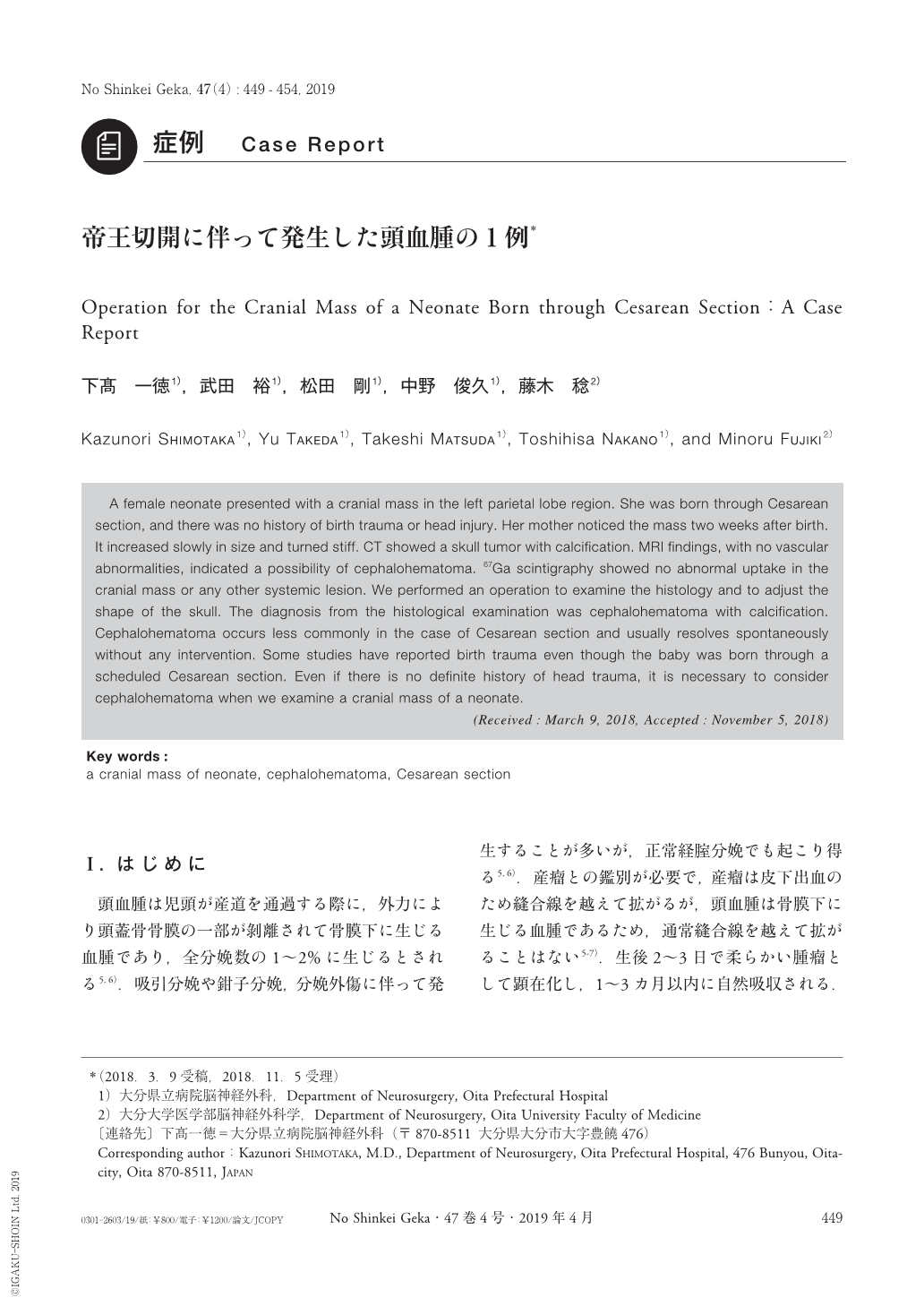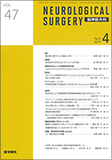Japanese
English
- 有料閲覧
- Abstract 文献概要
- 1ページ目 Look Inside
- 参考文献 Reference
Ⅰ.はじめに
頭血腫は児頭が産道を通過する際に,外力により頭蓋骨骨膜の一部が剝離されて骨膜下に生じる血腫であり,全分娩数の1〜2%に生じるとされる5,6).吸引分娩や鉗子分娩,分娩外傷に伴って発生することが多いが,正常経腟分娩でも起こり得る5,6).産瘤との鑑別が必要で,産瘤は皮下出血のため縫合線を越えて拡がるが,頭血腫は骨膜下に生じる血腫であるため,通常縫合線を越えて拡がることはない5-7).生後2〜3日で柔らかい腫瘤として顕在化し,1〜3カ月以内に自然吸収される.稀に生後2〜4週で血腫の骨化が始まり,数カ月かけてカルシウムの沈着と吸収が起こるが,自然治癒が期待できるため経過観察でよいとされる7).自然に治癒しないときは将来的な頭蓋骨の変形が懸念されるが,頭蓋骨の成長には影響がなく,時間の経過で頭蓋骨の形状は正常に近くなると言われており4),通常外科治療は要しない.
今回われわれは,予定帝王切開で生まれた児の頭部腫瘤に対し精査・外科治療を行い,骨化した頭血腫であった症例を経験したので報告する.
A female neonate presented with a cranial mass in the left parietal lobe region. She was born through Cesarean section, and there was no history of birth trauma or head injury. Her mother noticed the mass two weeks after birth. It increased slowly in size and turned stiff. CT showed a skull tumor with calcification. MRI findings, with no vascular abnormalities, indicated a possibility of cephalohematoma. 67Ga scintigraphy showed no abnormal uptake in the cranial mass or any other systemic lesion. We performed an operation to examine the histology and to adjust the shape of the skull. The diagnosis from the histological examination was cephalohematoma with calcification. Cephalohematoma occurs less commonly in the case of Cesarean section and usually resolves spontaneously without any intervention. Some studies have reported birth trauma even though the baby was born through a scheduled Cesarean section. Even if there is no definite history of head trauma, it is necessary to consider cephalohematoma when we examine a cranial mass of a neonate.

Copyright © 2019, Igaku-Shoin Ltd. All rights reserved.


